
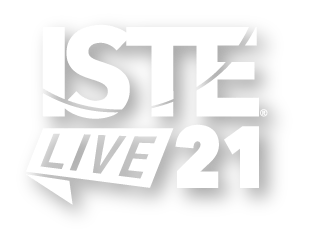
Nubibot: Using Technology to Help Exceptional Children Live Normal Lives |
Participate and share : Poster
Layla Handal Valeria Gutierrez Sofia Lovo Annabella Giammattei Jimena Lopez
Have you ever experienced trouble expressing your feelings? Imagine what children with autism go through every day. We have created a prototype plush and app to help children express, interact, enrich and learn. Our friend Nubibot also plays music, shows different colors and helps them express how they are feeling.
| Audience: | Principals/head teachers, Teachers, Technology coordinators/facilitators |
| Skill level: | Beginner |
| Attendee devices: | Devices not needed |
| Topic: | Equity & inclusion |
| Grade level: | PK-5 |
| Subject area: | Special education, STEM/STEAM |
| ISTE Standards: | For Students: Innovative Designer
|
| Additional detail: | Student presentation |
Nowadays, it is important to challenge children. Education, before used to put a lot of weight on memorization, and on teachers being the center of learning. However, our current times demand people to use technology and to apply what they have learned working as a team. We gave our students the challenge to design a solution to help a friend in need. They didn't have to go far to find someone in need. Since they were little, they have been classmates with a girl who suffers with the Autism disorder. By being by her side for many years they have come to learn many of the difficulties she faces. This is where it all started, with the desire to create a tool that would help her.
The project benefits both, the student designing the project and the student utilizing the creation. Too often, autistic children must rely on parents and caregivers for simple tasks like eating or playing with friends. Our main idea is to reduce the learning inequalities and basic needs of expression that so many children with different disorders can turn to one’s advantage.
Also, as it was stated before, it benefits the students assisting with the creation of a solution in their computational thinking skills, designing innovative solutions and creating knowledge from the information of their community.
In addition, as a complementary effect, generating within the educational community Autism awareness. The project is based on constructivism, which enables the development of creativity, the capacity for abstraction, development of multiple intelligences and teamwork. Allowing the educator develop strategies to perform actions which help with students’ motivation, the effective communication of ideas and their implementation to solve real world problems.
Students developed many competences with the invention of Nubibot:
1. Skills for coordination. (Operation of manipulatives, thinking from the abstract to the concrete)
2. Promotion of experiments, where mistakes are part of learning and self-discovery.
3. Appropriation of new languages (graphic, iconic, mathematical, natural.)
4. Strengthening of human values.
5. Development of fine motor skills.
6. Teamwork skills.
7. Creative abilities. (Construction and testing own ideas in a ludic and heuristic learning environment.)
8. Observance of details.
9. Development of multiple intelligences.
You can view what students leaned in the video name: Nubibot Makerspace. Make sure to add the subtitules.
(https://www.youtube.com/watch?v=cACwQ1NZ5ro)
How was the prototype created?
The group of students where guided into different phases to create their prototype. Each phase had a different purpose to guide them.
Phase I: Different challenges were presented to students. In these challenges they had to solve small jobs that led them to experience what it was like to live with these disabilities. For example, completing a task blindfolded. This was in order to create the first awareness of all existing disabilities.
Phase 2: The students were asked to choose a disability and create some elements that could improve their daily lives.
Phase 3: The students presented their ideas, listened to the ideas of others, giving and receiving feedback to improve the proposed solutions.
Phase 4: Students investigated about the disability they chose; they also interviewed many experts in the manner and visited many centers to understand and interact with people of their disability.
Phase 5: Students selected the best idea as a class to develop only one proposal.
Phase 6: Students started the design thinking process to develop the winning prototype. They investigated, created sympathy maps, build, test and rebuild their designs as many times as needed. For the creation of the Nubibot they learned how to program Arduino uno, to weld, connect the TFT screen and to assemble all the cables.
For the creation of the app they first learned how to use Scratch and then with this base they later learned to create each section in the MIT Inventor App.
You can view this phase in the video name: Design thinking nubibot (https://www.youtube.com/watch?v=YNK-S4R8ozs)
Phase 7: As part of the cyclical design process, it was important to create an alliance with an Austism center in San Salvador (Centro Terapeutico para el Desarollo de El Salvador) so that they could provide the students the necessary feedback and elements to succeed with the project and perfect the protype.
You can view this phase in the video name: alliances nubibot
(https://www.youtube.com/watch?v=TRS5D17qDW8)
Phase 8: Finally, our friend Nubibot was born. The group of students show the final prototype to her special friend. She loved it and was very greatful for what they have done for her.
You can view this phase in the video name: users nubibot
(https://www.youtube.com/watch?v=Jrpvg1QDWkc)
Which materials where use to create the Nubibot?
For the creation of the Nubibot we apply the 4R rule: Reduce, Reuse, Recycle and Recover. It was important since the beginning to take this rule in action. Students learned how to look for materials from old toys and recycled materials from past projects. This rule was also important because, we want this project to be as replicable as possible and reducing the costs of materials opens the doors for it to be available to everyone.
The materials we use where: Arduino uno, plush toy fabric and filling, battery pack, Bluetooth adapter, speaker, TFT screen, cables to connect and smart phone with the app.
How did the Name Nubibot was born?
The group of girls wanted to create an easy name for everyone to pronounce and easy to remember. They started with many different ideas and changing the name daily. As part of the design process they felt the need to change the shape and personality of their plush toy, so they came up with the shape of a cloud. So, they asked themselves? We all love clouds, right? They are fluffy, huggable, radiate a positive energy which would make the perfect friend for Autistics children. In Spanish clouds are called “Nube” and “bot” comes from robot, which in this case indicates the technology inside the cloud, therefore “Nubibot” came out to be the perfect name.
Here are some links that supports our project and the studenst learning process:
1. Desing thinking process:
https://www.youtube.com/watch?v=YNK-S4R8ozs
2. Alliances created to Build prototype:
https://www.youtube.com/watch?v=TRS5D17qDW8
3. Users with our friend the Nubibot:
https://www.youtube.com/watch?v=Jrpvg1QDWkc
4. Process and students learning (complete video)
https://www.youtube.com/watch?v=cACwQ1NZ5ro
5. Materials needed to replicate prototye:
https://drive.google.com/drive/folders/1ewDlS-CbeHNZf2ofG9mRWX6gCDXDhZ6r
Here are some websites that helped us with our investigation:
1. https://www.healthline.com/health-news/the-big-reason-autism-rates-increased-again
2. https://www.hindawi.com/journals/isrn/2014/514026/
3.https://theconversation.com/people-with-autism-dont-lack-emotions-but-often-have-difficulty-identifying-them-25225
4. https://www.nationalautismresources.com/autism-toys/
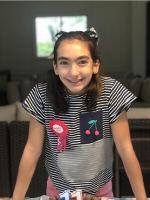
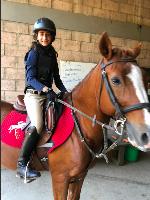
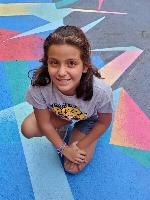
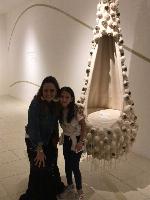

Fostering Self-Regulation Skills and Personalized Learning in an Elementary Setting
Inclusion of the Use of Technology for the Visually Impaired
Solving Instructional Design Challenges With Coaching and Creativity